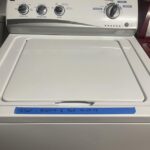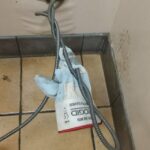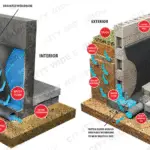Have you ever jumped into the shower, expecting a soothing stream of hot water, only to be greeted by a lukewarm drizzle? It’s frustrating, isn’t it?
You pay for hot water, and you deserve to enjoy it. But what happens when your hot water heater suddenly decides lukewarm is its new favorite temperature? If you’re tired of waiting for that perfect hot shower or wondering why your dishes aren’t as clean as they should be, this article is for you.
Here, you’ll uncover the common reasons behind this lukewarm mystery and find out what you can do to reclaim your hot water. Whether it’s an easy fix or requires expert help, understanding the cause is the first step towards solving your problem. Keep reading to discover how to restore the warmth and comfort you’re missing.
Common Causes Of Lukewarm Water
Experiencing lukewarm water from your hot water heater can be frustrating. This issue often stems from several common causes. Understanding these can help you diagnose and resolve the problem. Below, we explore the most typical reasons why your water heater may not be heating water effectively.
Thermostat Issues
The thermostat controls the water temperature in your heater. If it’s faulty or set incorrectly, the water may not reach the desired heat. Checking and adjusting the thermostat can often resolve this issue.
Sediment Build-up
Over time, minerals in the water can settle at the bottom of the tank. This sediment layer acts as a barrier between the water and the heating elements. Flushing the tank can help clear these deposits and restore proper heating.
Faulty Heating Elements
Heating elements are crucial for warming the water. If they malfunction, the water may only get lukewarm. Inspecting and replacing faulty elements can solve this problem.
Incorrect Temperature Settings
Your water heater might be set to a lower temperature than desired. Review the temperature settings and adjust them to ensure hotter water. This simple check can often increase water temperature significantly.
Inspecting Your Water Heater
Imagine stepping into the shower, expecting a soothing stream of hot water, only to be greeted by lukewarm disappointment. This frustrating scenario might have you wondering what’s wrong with your water heater. Addressing this issue starts with a thorough inspection of your water heater. Let’s dive into the key areas you should examine to get your hot water running at the right temperature.
Visual Inspection
Begin your inspection with a simple visual check. Look for any obvious signs of wear and tear on the exterior. Is there rust or corrosion? These could indicate deeper problems. Check for any leaks around the tank or pipes. Even small drips can lead to bigger issues if not addressed.
Sometimes, the solution is right in front of you. A damaged or worn-out tank might need replacement. Keeping an eye out for these signs can save you from unexpected cold showers.
Checking The Power Supply
Your water heater can’t do its job without a steady power supply. Start by ensuring it’s properly plugged in. Check if the circuit breaker hasn’t tripped. A simple reset might restore power.
If your heater uses gas, confirm that the pilot light is on. No light means no heat, which could be the cause of your lukewarm water. It’s always worth checking these basics before jumping to conclusions.
Examining The Thermostat
The thermostat controls the temperature of your water. If it’s set too low, lukewarm water is inevitable. Adjust the thermostat to a higher setting to see if it solves the problem.
Is the thermostat functioning properly? Check for any error codes or unusual readings. Sometimes, a faulty thermostat might need replacing to restore your hot water.
Consider: is your thermostat accurately calibrated, or is it time to call in a professional for a deeper assessment?
Inspecting these elements might uncover the reason behind your water heater woes. Each step offers insights that could lead you to a solution. Take action today and reclaim your hot water comfort!
Fixing Thermostat Problems
Is your hot water heater stuck on lukewarm? The thermostat might be the culprit. A faulty thermostat can lead to inconsistent water temperatures. Understanding thermostat issues is key to restoring hot water. Let’s explore how to adjust and replace the thermostat.
Adjusting The Temperature
First, check the thermostat settings. Sometimes, they get accidentally changed. Locate the thermostat on your heater. It usually has a dial or digital display. Adjust the temperature to your preferred setting. Be cautious not to set it too high. High temperatures can lead to scalding risks. After adjusting, test your water temperature again. It should be warmer if this was the issue.
Replacing The Thermostat
If adjusting doesn’t work, consider replacing the thermostat. Start by turning off the power to the heater. Safety first! Remove the access panel to reach the thermostat. Note the wiring connections carefully. Disconnect the old thermostat. Install the new one by matching wire connections. Ensure everything is secure. Restore power and test the water. A new thermostat can solve lukewarm problems effectively.

Credit: m.facebook.com
Dealing With Sediment Build-up
Dealing with sediment build-up in your hot water heater is vital. Sediment forms when minerals like calcium settle at the tank’s bottom. This build-up can cause your heater to run lukewarm. It reduces efficiency and can lead to costly repairs. Regular maintenance can keep your water heater running smoothly. Two effective methods help manage sediment build-up. Let’s explore these solutions.
Flushing The Tank
Flushing the tank removes sediment and improves heater efficiency. Start by turning off the heater and water supply. Connect a garden hose to the tank’s drain valve. Direct the hose to a safe drainage location. Open the valve to let water flow out. This process washes away sediment. Repeat until the water runs clear. Refill the tank and restore power. Regular flushing keeps your water heater in top shape.
Using Commercial Cleaners
Commercial cleaners can dissolve stubborn sediment. These products are easy to use and readily available. Read the cleaner’s instructions carefully. They ensure safe and effective use. Usually, you add the cleaner to the tank. Let it sit for the recommended time. Then, flush the tank to remove the dissolved sediment. Always rinse thoroughly to remove any cleaner residue. Regular use of commercial cleaners can extend your heater’s lifespan.
Repairing Heating Elements
Experiencing lukewarm water often points to a faulty heating element. This issue reduces the water heater’s efficiency. Repairing or replacing the element can restore consistent hot water flow.
When your hot water heater only runs lukewarm, it’s often a sign that something’s amiss with the heating elements. These components are crucial for heating the water to your desired temperature. Understanding how to repair them can save you from cold showers and high utility bills. So, what can you do to get your hot water heater back in top shape? Let’s dive into the specifics of repairing heating elements and get you the hot water you deserve.Testing The Elements
The first step is to test the heating elements to identify any issues. You can use a multimeter for this task. Set the device to the lowest ohms of resistance setting. Disconnect the power to your water heater to avoid any electrical hazards. Then, remove the wires from the heating element terminals. Place the multimeter probes on each terminal to check for continuity. If the multimeter reads a high resistance, your element is likely faulty. Isn’t it interesting how a simple tool can reveal so much about your water heater’s health? By testing the elements yourself, you can pinpoint the problem without unnecessary expenses.Replacing Faulty Parts
If testing indicates a faulty element, it’s time to replace it. Start by draining the water heater to avoid spills. Once drained, use a wrench to loosen and remove the faulty element. Have you ensured the new element matches the old one in size and type? It’s crucial for the replacement to fit perfectly. Install the new element by securing it with the wrench. Reconnect the wires and restore power to your unit. Fill the tank with water and wait for it to heat up. Does your water heater now deliver the hot water you’ve been missing? Chances are, you’ve successfully solved the problem. Repairing heating elements can seem daunting at first. But with the right tools and a bit of patience, you can tackle the issue head-on. After all, why settle for lukewarm when you can enjoy a steaming hot shower?
Credit: diy.stackexchange.com
When To Call A Professional
Experiencing lukewarm water can frustrate anyone. Sometimes, the problem needs expert attention. Knowing when to call a professional can save time and money. It’s essential to recognize issues beyond basic fixes. Safety concerns also need careful consideration. Let’s explore these critical points.
Recognizing Complex Issues
Some problems aren’t easy to diagnose. If the thermostat malfunctions, it can create lukewarm water. A professional can assess the thermostat’s condition. Sediment buildup in the tank might also be the culprit. It requires professional cleaning or repair.
Complex wiring issues may also cause trouble. An expert can safely inspect and fix these problems. If the heater’s age is causing inefficiency, a professional might suggest a replacement. Recognizing these complex issues early helps prevent further damage.
Considering Safety Concerns
Safety should always be a priority. Tampering with electrical parts can be dangerous. It’s better to let a professional handle it. Gas water heaters come with additional risks. Gas leaks are hazardous and need immediate attention.
Professionals have the right tools and knowledge for safe repairs. If you hear strange noises from your heater, don’t ignore them. They might indicate a serious problem. Calling a professional ensures your heater operates safely.
Preventing Future Issues
Experiencing lukewarm water from your heater can be frustrating. Addressing this issue early can save money and time. Regular maintenance and proper settings ensure your water heater runs smoothly. Let’s explore how to prevent future issues.
Regular Maintenance Tips
Regular maintenance keeps your water heater efficient. Check the heater for leaks and rust. Flushing the tank removes sediment and improves performance. Inspect the anode rod and replace it if necessary. A well-maintained heater lasts longer and performs better.
Optimal Temperature Settings
Setting the right temperature is crucial. Most experts recommend 120 degrees Fahrenheit. This setting saves energy and prevents scalding. Avoid setting it too high to prevent damage. Adjusting the thermostat ensures consistent hot water.

Credit: www.beltsvillefootcare.com
Frequently Asked Questions
Why Is My Hot Water Heater Lukewarm?
Your heater might have a faulty thermostat. Check it. Adjust or replace if necessary.
How Can I Fix Lukewarm Water Issue?
Start by checking the temperature setting. Increase it slightly. Ensure safety precautions are followed.
Could Sediment Cause Lukewarm Water?
Yes, sediment buildup affects efficiency. Flush the tank regularly to maintain performance.
Is The Heating Element Malfunctioning?
Possibly. Inspect the heating element for damage. Replace it if it’s worn out or broken.
Should I Consult A Professional For Lukewarm Water?
If basic checks don’t help, contact a plumber. They can diagnose and fix complex issues.
Conclusion
Lukewarm water can be frustrating. Simple fixes often solve the problem. Check your thermostat settings first. Sediment buildup might be the culprit. Flushing the tank can help. Consider inspecting the dip tube for damage. Insulation might be needed for heat retention.
Regular maintenance ensures consistent hot water. Sometimes professional help is necessary. Don’t ignore persistent issues. Hot water is essential for comfort. Addressing the issue promptly saves time and stress. Keep your water heater in top condition. Enjoy consistent hot showers every day.





